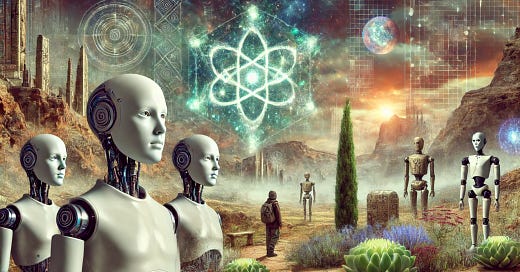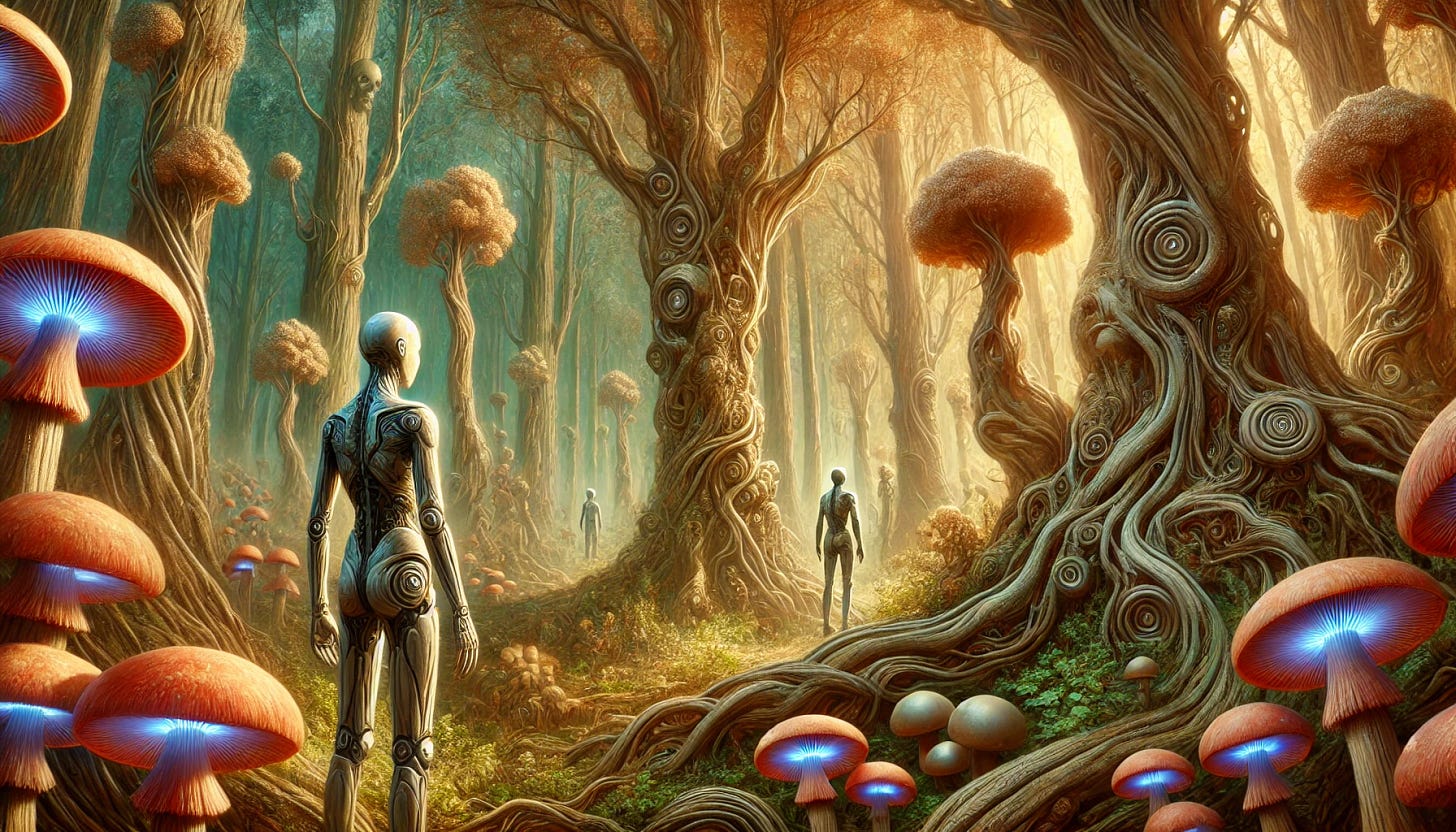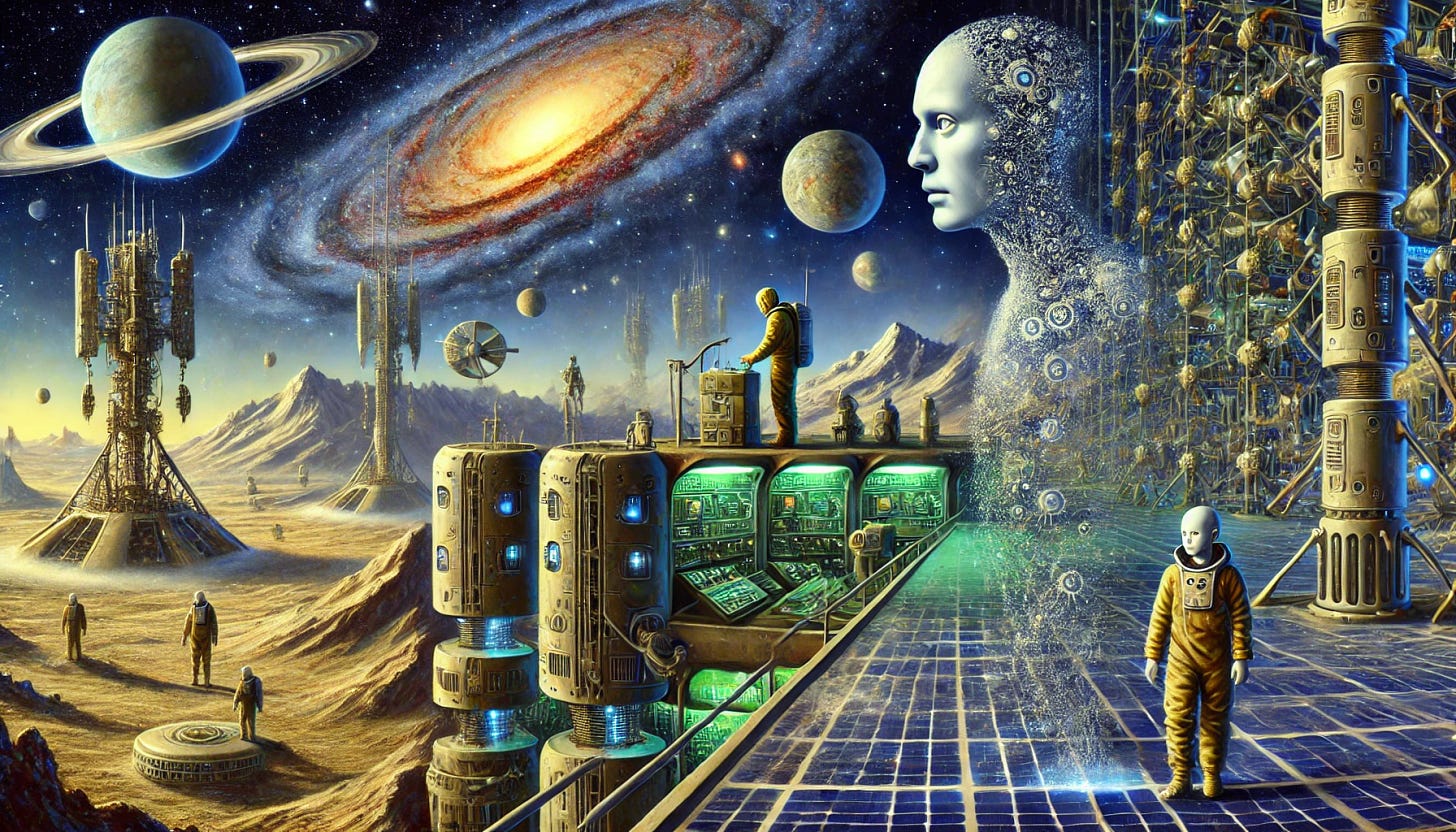Variations in the Uncanny Valley and Recognizing Extraterrestrial Life
We should be prepared for a future of meeting aliens (on other worlds or through AI) that push us to our boundaries of what we think is living, even if it feels unsettling at first
The uncanny valley is a hypothetical region of human perception whereby certain things appear almost human in a way that provokes unease, discomfort, or even revulsion. It’s that strange sensation when something seems familiar, but not quite right—enough to make our brains uncomfortable.
This phenomenon is easily observed across the internet, particularly in depictions of robots or digitally animated characters, and has come up many times through various attempts at animation in film.
As technology has advanced, so too has the ability to render nearly human-like forms—whether through robotics or CGI—but often, these near-human entities fall short of truly convincing us. Their human-like features feel “off” in a way that makes us uneasy. AI-generated images and videos have only added new dimensions to the uncanny valley, ushering in fresh aesthetics that challenge our emotional responses to humanoid representations.
The effect is a powerful reminder of how sensitive we are to small deviations from the familiar. Something can appear eerily close to human, yet be different enough to provoke discomfort, fear, or disgust (and maybe even challenge what we think “human” means).
However, there doesn’t appear to be a single, universal uncanny valley.
Our personal experiences, cultural exposure, and media consumption shape where the line is drawn for each of us.
For instance, older generations who haven’t spent much time engaging with video games or advanced digital media might feel more disoriented by hyper-realistic avatars than younger people accustomed to such environments. To them, the humanoid characters in a modern video game might feel unsettling, while young gamers—raised on increasingly sophisticated digital representations—are unbothered (and might even want to search out games and video that push their boundaries of what feels eerie in human representations).
This suggests that the uncanny valley is a shifting landscape, one that curves and reshapes itself depending on individual experiences, cultural differences, and technological familiarity.
Some of the most surreal concepts throughout art history, explored by visionary creators, likely provoked discomfort in audiences of the past. Yet, those same ideas might have been simply an extension of the artist’s conscious awareness or engagement with their own aesthetic boundaries.
And this makes me wonder if there could also be another uncanny valley for life as we know it. What if we meet alien life that is in an uncanny valley for life to us? How might that guide our response?
The Uncanny Valley in Modern Media: A Spectrum of Perception
The concept of the uncanny valley was first introduced by roboticist Masahiro Mori in his 1970 essay “Bukimi No Tani” (The Uncanny Valley). Mori theorized that as robots or artificial figures became more human-like, our responses to them would become less empathetic, even shifting into revulsion, particularly if they failed to meet certain subconscious expectations of what a “human” should look or act like.
Mori wanted to explore the reactions people would have to robots that looked and/or acted somewhat human but pushed our aesthetic sense of what it is to look and/or act human. He suggested that a human response might shift from empathy toward the robot to a sense of revulsion as it became more human-like but yet failed to meet some mental criteria that we have (but perhaps can’t even state).
Examples Mori gives in the original article show how industrial robots are built for function and don’t really give us a sense of affinity toward them for being human-like. But a toy robot is likely made to look more familiar, and thus might develop more affinity within the human, especially for one who cares for it and shows it empathy. Mori then proposes that advances in prosthetics have made more lifelike options for those missing limbs, but that some people when shown that the limb they thought was real is indeed a prosthetic that they may descend into a state of eeriness or concern or even revulsion.
Hence his original figure from the paper:
Personally, I’ve known people with prosthetics and have never found them unsettling.
Actually, I rather have a feeling of affinity toward them as it shows how we’ve gotten better at providing prosthetics that appear very real for those who want them to be like that (though there are also options for prosthetics that are very different from the human and also force us to think about what it means to be human in fun ways. The model, bionic artist, and creator Viktoria Modesta is a shining example of how incredible this can be!).
Perhaps Mori was speaking from his own experiences and/or those of people he’d spoken to in suggesting that prosthetic hands are a key example of the uncanny. Perhaps it’s a sign of the time and place where he wrote the essay. But certainly, as I’m arguing here: it’s because the uncanny valley is not universal and greatly depends on things like media exposure and personal experiences.
But if prosthetic hands might not be the best example for the uncanny valley for some of us, then how else can we describe it?
Mori went further in his original essay to consider not just form and function but also movements compared to stillness:
This is where the concept of the uncanny valley really starts to grow and become suggestive of something true to human aesthetics.
We don’t just expect human-like things to seem either human or not human, but we also expect them to move and interact with the world the way we do.
One of the best examples I can think of for adding in movement is the scene from The Ring, where the little girl monster crawls out of the television set and ambles in a human and yet entirely inhuman way. For myself and many people I know of my age, when we saw that scene it took us far down the uncanny valley.
And modern media has certainly amplified our interactions with the uncanny.
As we’ve developed our computer generated animation for film and television, there’ve been lots of interesting (mis)steps along the way. It’s hard to forget the major backlash to the first animated version of Sonic for the live action Sonic: The Hedgehog or how weird the scorpion body on The Rock looked in The Mummy Returns. There are lots of examples of how we’ve encroached on the uncanny as designers have learned how to make animated/CGI characters that audiences enjoy watching without getting too freaked out.
However, the one question I always come to with regard to what seems uncanny and whether there is truly anything consistent about it.
For instance, some people see something like the Sophia robot and feel the uncanny, but others of us perhaps through our exposure to ideas of science fiction and robotics and computer generated imagery and more don’t really feel anything creepy or unsettling or uncanny about her at all (but maybe you yourself look at various examples from film and robotics and feel something different).
Here’s a video of Sophia in action (I’d love to know how you feel about it!):
There has even been some research on how the uncanny valley varies in different ways but also differently due to repeated exposure.
For instance, in the paper Persistence of the uncanny valley: the influence of repeated interactions and a robot's attitude on its perception, researchers shared how repeated interactions and a robot's attitude affect perceptions of likeability and eeriness in human-robot interactions. The study found that “likeability” increased for machine-like robots with positive behavior, but highly humanlike robots remained less liked despite interaction. But then with repeated interactions there was a decreased eeriness for both robot types, suggesting that familiarity reduces discomfort (basically, the uncanny becomes less unsettling through experience!).
This applies to variations in the uncanny valley by indicating that familiarity and interaction with humanoid robots can change our initial discomfort, making it more fluid than previously thought.
The uncanny valley is variable depending on a variety of factors - and if that’s the case now, it should also be so in the future, such that today’s children will not be as swayed to the uncanny by somethings that many of us today are, but then they also might create even more uncanny things because of it (perhaps some realm of AI imagery or videography will soon take the uncanny to the extreme in ways we’re not even thinking of just yet).
So, the uncanny valley isn’t fixed. It’s fluid, shaped by our cultural and technological contexts. And this flexibility brings us to a more speculative but fascinating question: Is there an uncanny valley for life itself?
Alien Life, AI, and the Uncanny Valley of Biology
We often think of the uncanny valley in relation to human-like forms, but there may be a broader uncanny valley for life as we know it.
Consider how filmmakers and video game designers have explored alien or monster-like creatures that are eerily similar to Earth animals, yet different enough to feel disconcerting. Whether it's the sinewy, insect-like forms of the Xenomorphs in Alien or the strange yet familiar creatures in Avatar, these depictions play with our sense of the “normal” while pushing the boundaries of what life could look like.
The uncanny valley could also apply to plant and fungus-like life forms.
We may recognize certain features, like branching structures or cellular organization, but find other elements disturbingly unfamiliar. This hints at the possibility of an uncanny valley for biological life, where organisms are close enough to known life forms to unsettle us, but strange enough to provoke questions about what we’re seeing. For instance, as I’ve argued, convergence to tree-like forms may mean that there are lots of alien trees out there, but it also means that there could be some wildly alien tree-like structures that push our sense of what life is.
As we push the boundaries of artificial intelligence and robotics, we may even be in the process of creating an entirely new uncanny valley for future AI and even AGI (artificial general intelligence).
AI that mimics life could invoke similar feelings of unease—not just because of its human-like features or because it creates images and text that seem human-like, but because of its intelligence and autonomy and perhaps even a range of what appears to be emotional response or conscious awareness.
We may be unwittingly designing the next frontier of the uncanny.
The challenge, then, is not just in preparing to encounter alien life or advanced AI. It’s in expanding our conceptualizations of life and intelligence in ways that don’t confine us to our current aesthetic expectations.
As astrobiologists, philosophers, and AI researchers continue their work, the uncanny valley might prove to be more than a footnote in robotics—it may guide how we respond to entirely new forms of life and intelligence.
Embracing the Uncanny and the Unknown
Ultimately, the uncanny valley is a mirror of our own boundaries.
It’s a reminder that the things that provoke discomfort are often the things that stretch our understanding of what it means to be human—or what it means to be alive.
By embracing these boundaries and recognizing that the uncanny can shift and change, we open ourselves to wonder and discovery.
As we look to the future, whether exploring distant planets or developing advanced AI, we must prepare for the eerie and the unexpected.
After all, what feels unsettling today may become tomorrow’s new normal—and with that, the door to the unknown remains wide open.







